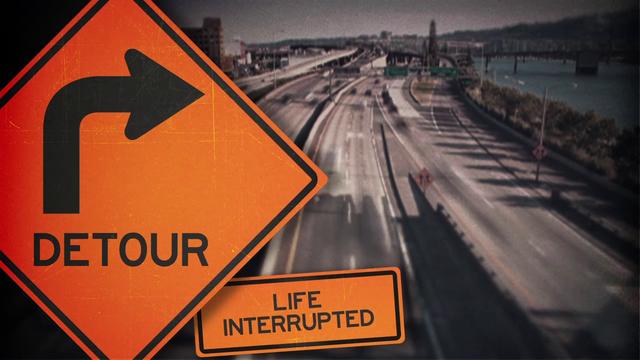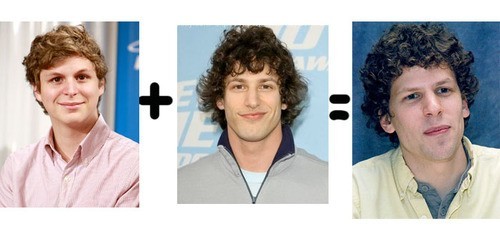Point of view is one of the most subtle and powerful tools in the writer's toolbox. It's also one of the most troublesome.
I would guess 90% of the work I read from my peers and clients has at least some POV issues. Whether it's an unclear POV, too much narrative distance, or unwelcome POV shifts, most writers struggle to master POV. I myself, have yet to master it, but I've found it helpful to draw some very clear borders between POV types. I've already written a lengthy article on the subject, but let me go over it again.
I distinguish between two main types of POV, each with their own sub-types:
- First Person - "I"
- Third Person/Omniscient - "He", "She"
[Note: In the aforementioned article, I discuss Second Person as well. It plays a role in other POVs, but I do not consider it a viable option for an entire work of serious fiction]
With first person, you have two main subtypes:
- Present tense, where the POV character narrates events as they happen
- Past tense, where the POV character is recalling events that have already happened to them.
When I'm working in first person past, I always decide on some definite period of time between the events happening to the narrator, and the narrator relating those events. It helps me decide how much perspective to provide. If the narrator has just finished living through the events, they won't have as much perspective as they would if they were separated from the events by several years. The narrator's feelings on the events will color the prose, and that color deals with a concept I call Narrative Mood (see this article for more on the subject).
Another first person subtype related to mood is the conversational style. But conversational first person isn't as simple as you'd think. When considering any POV, you need to ask yourself whether the narrator is aware that he or she is narrating, and in turn, if he or she is aware of who they are narrating to. It might also be helpful to ask if the narrator is aware of the medium in which the story is delivered, or if the narrative is a transcript of some other means of delivery.
For example, does the narrator know their words are being read as a book, or are they speaking the whole story aloud to a fictional audience? In an epistolary novel like Dracula, the narrative may well be in first person, and the narrator may well be speaking to an audience, but the narrator is not necessarily aware of the reader, nor that his or her narration is being read as part of a story. Additional dimensions like the epistolary technique can enhance a story's sense of realism, but they also require an extra degree of care on the author's part.
For example, does the narrator know their words are being read as a book, or are they speaking the whole story aloud to a fictional audience? In an epistolary novel like Dracula, the narrative may well be in first person, and the narrator may well be speaking to an audience, but the narrator is not necessarily aware of the reader, nor that his or her narration is being read as part of a story. Additional dimensions like the epistolary technique can enhance a story's sense of realism, but they also require an extra degree of care on the author's part.
I view third person as a sliding scale, with narrative intimacy on one side, and narrative distance on the other. A story written in an intimate third person will read very similar to first person, just with different pronouns. All events will be filtered through a single POV character at a time. You can have multiple POV characters, but in every case, the POV character is distinct from the narrator (more on that in a moment). A story written in omniscient sacrifices almost all of its intimacy in the name of perspective. Omniscient provides more facts about the story, but less emotion, and less character. It has its uses, but it's difficult and risky, because it's often less engaging to the reader.
In most forms of third person, the narrator is a faceless, nameless non-being--a camera, essentially--who exists for the sole purpose of conveying the story. This camera can be zoomed in or out as needed, and that is the true strength of third person narrative. But it's important to understand what the camera can and can't see, and to know when the camera should be turned on and off.
It is also possible for a third person narrator to have a personality, and this can be particularly effective in omniscient. It has been done to great effect by the likes of Charles Dickens and Douglas Adams. A third person narrator might also be a non-central character in the story, like Ishmael in Moby Dick.
The main thing in all this is to take time to carefully consider who or what your narrative voice is, what spatial and temporal relationship they have with the events of the story, and what feelings, if any, they have about the events.
These decisions are best made during the plotting phase of your story, because it's a lot of effort to change your POV after the fact. But that doesn't mean there's no POV work to do during the editing phase.
In most cases, a POV change in the editing phase will necessitate rewriting the story entirely, or close to it. But there are very good reasons to do it. First off, you should always choose the right POV for the story, not just whichever suits you best. It's better to change your writing to serve the story than vice-versa. (Like this quote? Click here to tweet it!). Second, even if you're an obsessive plotter like me, you won't always know exactly where your story is going. You might go on a detour that changes the essential nature of your story, or makes one character more important than originally intended. When this happens, sometimes it's necessary to change the POV to suit the new story.
In most cases, a POV change in the editing phase will necessitate rewriting the story entirely, or close to it. But there are very good reasons to do it. First off, you should always choose the right POV for the story, not just whichever suits you best. It's better to change your writing to serve the story than vice-versa. (Like this quote? Click here to tweet it!). Second, even if you're an obsessive plotter like me, you won't always know exactly where your story is going. You might go on a detour that changes the essential nature of your story, or makes one character more important than originally intended. When this happens, sometimes it's necessary to change the POV to suit the new story.
Say you started off in a fact-laden omniscient, but as the plot developed, you found yourself falling in love with a particular character, and following them more than others. It's probably worthwhile to consider rewriting the whole story through that character's POV, either by making them a first person narrator, or by developing an intimate third person relationship with them.
If you're happy with your original POV choice, that still doesn't mean there's no POV work in the editing phase. Even if you're skilled in this area, you need to read your manuscript with a keen eye, to make sure you haven't written any accidental POV shifts.
Third person allows you to throttle the narrative distance up and down, but the transition needs to be smooth. It works just like zooming a camera lens in and out. Professional film makers modulate the distance of each shot, and zooms are a common technique, but it's rare to see a fast zoom in or out because it's jarring to the eye. The same is true in novels; rapid, careless modulations of POV are jarring to the mind.
Third person allows you to throttle the narrative distance up and down, but the transition needs to be smooth. It works just like zooming a camera lens in and out. Professional film makers modulate the distance of each shot, and zooms are a common technique, but it's rare to see a fast zoom in or out because it's jarring to the eye. The same is true in novels; rapid, careless modulations of POV are jarring to the mind.
It's also important to make sure POV modulations are warranted. If most of your novel is written with a fair amount of distance, but you have one important, steamy love scene, or an important, heated battle scene, it's probably worth it to zoom in on the character, and temporarily close that narrative gap. But if the scene isn't that important or intense, leave the distance where it's at.
...
Editing for POV is tough. There's no two ways about it. But like most tough things, it's worth doing. A well-controlled POV will distinguish you as a professional.
















